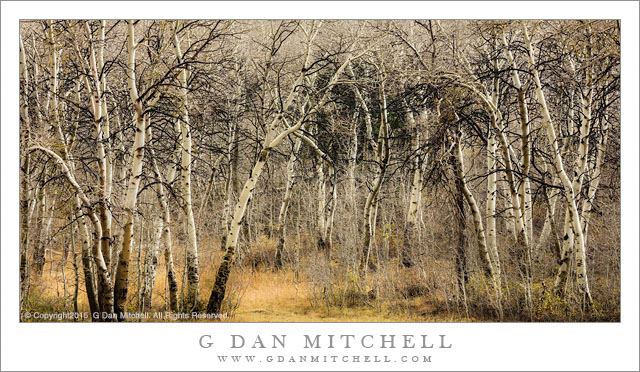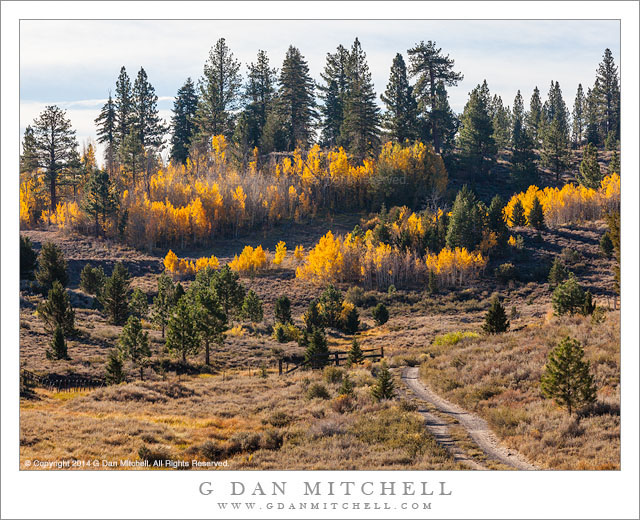
Leafless Aspen Grove. Sierra Nevada, California. October 4, 2015. © Copyright 2015 G Dan Mitchell – all rights reserved.
Sierra Nevada aspen grove with bare trunks
I’ve written before that this has been a very strange fall color season in the Eastern Sierra, and this photograph might be an example. Although the photograph was made very near the beginning of October, typically the time that the peak colors are arriving, this grove was one of many that were already completely devoid of autumn leaves. After spending some time in a very colorful area much further south along the eastern slopes of the Sierra, I decided to head back to the San Francisco Bay Area over a couple of passes that cross the range much further north. Near the top of one of these passes there is a vast open area that holds many large aspen groves, and I had hopes of photographing some color here late in the day.
I arrived to find a beautiful scene — high, open sagebrush country with clouds moving quickly across the landscape and creating changeable light. But the aspens were pretty much spent. I pulled off the main road at a place I know well, and took a short detour down a little gravel road toward the edge of groves where there are some very large trees. Here I found the trees, alright, but the leaves were gone. Fortunately, I like aspen groves in almost any condition — with bare branches, with new spring growth, with colorful autumn leaves, in snow — so I went to work photographing the dense patterns of closely spaced aspen trunks in the soft late-day light, muted even further by clouds.
 G Dan Mitchell is a California photographer and visual opportunist. His book, “California’s Fall Color: A Photographer’s Guide to Autumn in the Sierra” is available from Heyday Books and Amazon.
G Dan Mitchell is a California photographer and visual opportunist. His book, “California’s Fall Color: A Photographer’s Guide to Autumn in the Sierra” is available from Heyday Books and Amazon.
Blog | About | Flickr | Twitter | Facebook | Google+ | 500px.com | LinkedIn | Email
All media © Copyright G Dan Mitchell and others as indicated. Any use requires advance permission from G Dan Mitchell.

